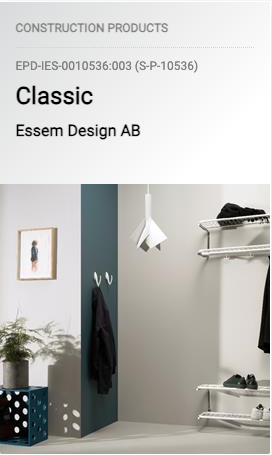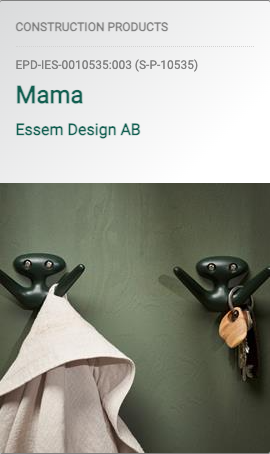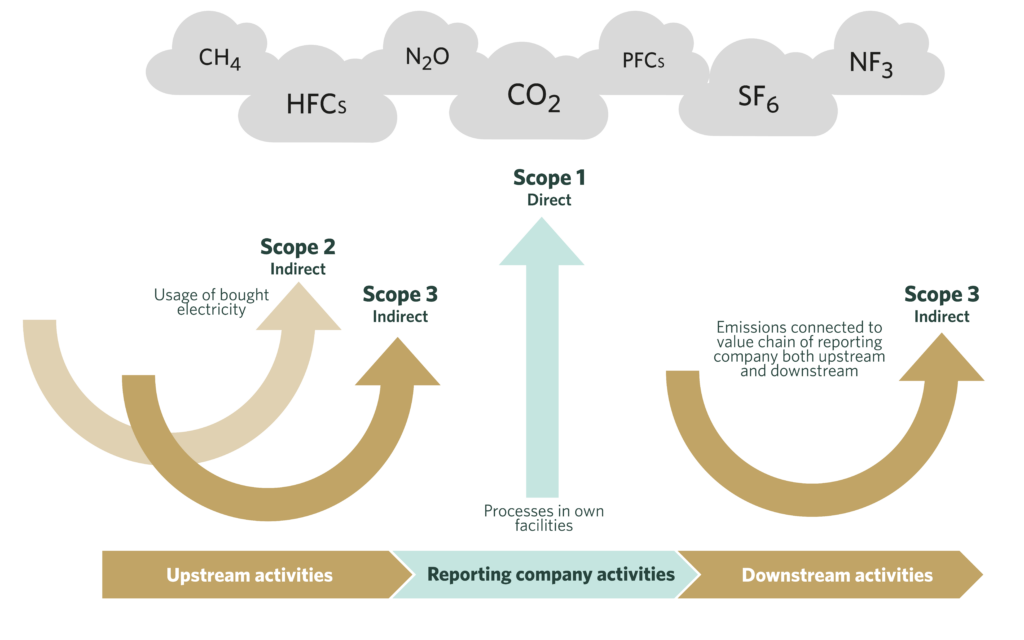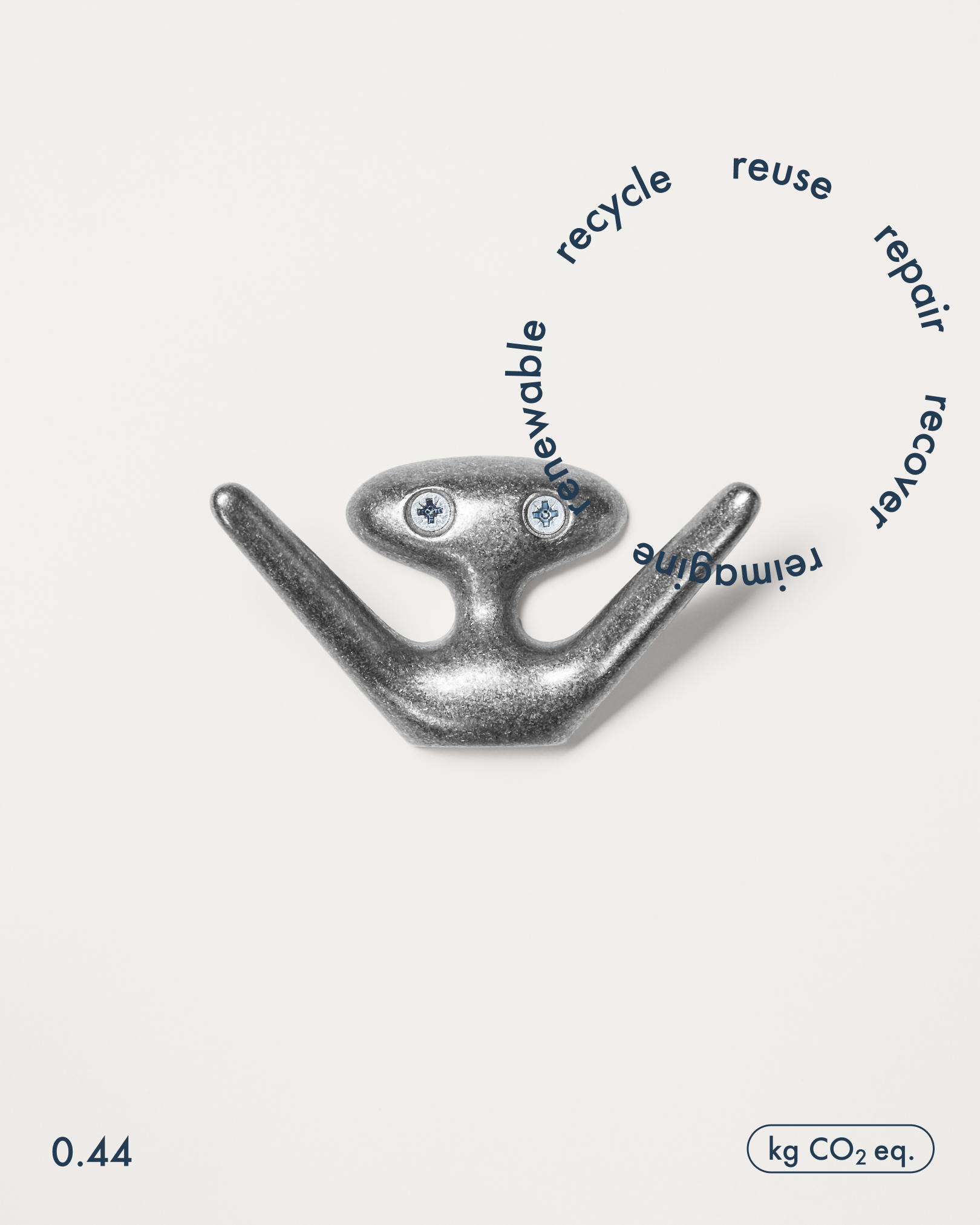
Essem is structuring to achieve the goal of becoming climate neutral with the help of EPDs and GHG Scope 3 calculations
Miljögiraff has supported Essem Design in developing product-specific Environmental Product Declarations (EPD) and in gathering data and performing calculations for Scope 3 reporting in accordance with the GHG protocol.
Essem Designwant to be at the forefront and ready when requirements and customer demand arise. They also want to create a structure that facilitates the development of reduction strategies that drive them toward their goal of becoming climate neutral by 2050.
Essem manufactures interior products in Sweden, and their sales are global. Their range includes hooks, hat and shoe racks, and seating furniture for both private and public customers.
EPDs to be prepared for future legal and customer requirements
Essem has chosen to develop Environmental Product Declarations (EPDs) because it is something the industry is talking about. Currently, they have few specific requirements to have EPDs for their products, but they have still chosen this path to be prepared for upcoming regulations and to stay ahead of the curve Currently, they have EPDs for their largest product groups to capture as much of their revenue as possible. The result is three EPDs that cover a large portion of their product range.
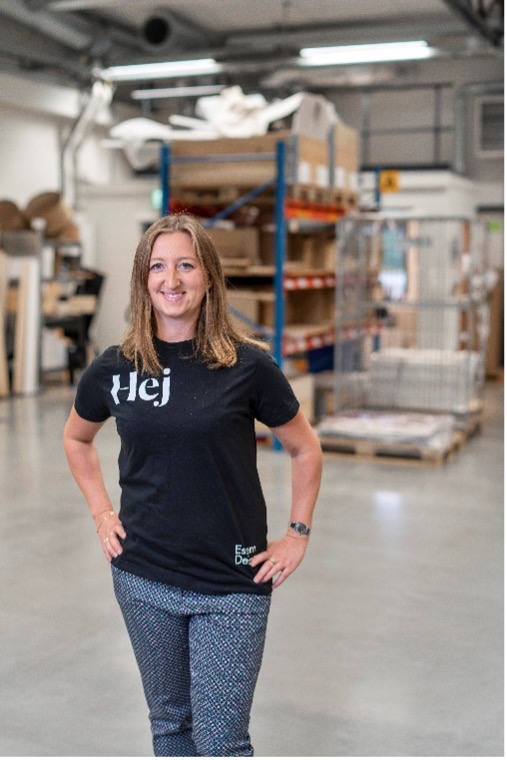
”Right now, we don’t have requirements to demonstrate emissions, but when they do come, we want to be prepared“
Magdalena Holm,
Sustainability Manager,
Essem
Magdalena Holm, Sustainability Manager, considers the EPD system and the product-specific rules related to the standard to be a significant advantage, as it provides a structured and standardized way to calculate environmental impact. This enables a fair comparison between products, which other certifications, standards, etc., do not necessarily require. Magdalena also emphasizes that the EPD system takes into account the lifespan, which is a significant factor in determining whether a product is more or less sustainable.
”There are many different certifications and ways to report climate impact. Using EPDs felt right because there is a standard that allows for fair comparisons between products, and it also takes lifespan into account.“
Magdalena Holm,
Sustainability Manager,
Essem
Using existing EPDs in the calculation of GHG Scope 3 emissions is efficient and reflects reality.
To develop an EPD, the Life Cycle Assessment (LCA) method is used. In the process, the customer is required to deeply investigate their value chain and gather relevant information regarding the elements that cause emissions, such as raw materials, energy consumption, transportation, etc. ChatGPT Miljögiraff then creates customer-specific datasets based on environmental data that reflects the customer’s value chain as accurately as possible.
When calculating GHG Scope 3 emissions, we do not focus solely on a single product or product group within a company but consider the entire company’s climate impact. Therefore, the work always begins by identifying what the company purchases and which are the major procurement categories. In Essem’s case, a significant portion of their purchases consists of raw materials for their products, and it turned out that the materials used in the products covered by the previously made EPDs account for the majority of these purchases. ChatGPT This resulted in Essem having specific data on the largest purchased raw materials, leading to an efficient process and a GHG Scope 3 calculation that closely reflects reality.
“ We aim to become emissions neutral, and to achieve that, we need to know where the emissions are so we can address them.”
Essem has long been committed to sustainability and has made conscious choices in this regard, but they have not previously obtained concrete figures on the impact of their efforts. For Essem, the EPDs and GHG Scope 3 calculations allow them to understand their current situation more clearly and support them in focusing and developing strategies that help them actually achieve their goals. With a comprehensive data library, they not only understand the extent of their impact but can also identify which parameters have the potential to reduce the impact of their purchases and production. Essem has set a goal to become climate neutral by 2050, and they aim to halve their climate impact by 2030.
Creating EPDs and calculating according to the GHG protocol ensures that Essem is prepared for future regulatory requirements and customer demands, while also enabling them to set effective and relevant sustainability strategies to achieve their goals.
Are you ready to embark on a similar journey as Essem, or are you at a different stage in your sustainability journey? We are curious! Contact us!
Miljögiraff thoughts
Build GHG Scope 3 calculations based on product-specific data from LCA/EPD or start more generally?
Starting with product-specific EPDs or GHG Scope 3 calculations using general data depends on the requirements and drivers present. Starting with EPDs like Essem felt logical because they anticipate demand for EPDs in their major product groups.
If specific data from a completed LCA is not available, as in Essem’s case, then generic data, such as average data for raw materials, is used. Using generic data for a GHG Scope 3 calculation is a good starting point and provides a broad overview of where emissions are occurring and where more detailed investigation is needed. However, generic data often includes conservative assumptions, which can result in emissions estimates that do not accurately reflect reality. Generic data in GHG Scope 3 calculations serves as an indication of what is significant and what is minor within the value chain. It is useful for forming an understanding of where to begin focusing efforts
ChatGPT Using more specific data in a GHG Scope 3 calculation is beneficial because it better reflects reality, allowing us to create more targeted and effective strategies. Many companies find that using specific data results in a lower carbon emission figure.
The best approach is an iterative method for data collection and refinement to ensure the process is completed effectively.
We at Miljögiraff recommend an iterative data quality process. By this, we mean that the most important step is to start, then we can delve deeper and improve data quality with more specific data for relevant emission points. It is important that companies set their efforts at a level that is reasonable based on their ambition and available resources.
We can approach GHG Scope 3 calculations in various ways, for example:
